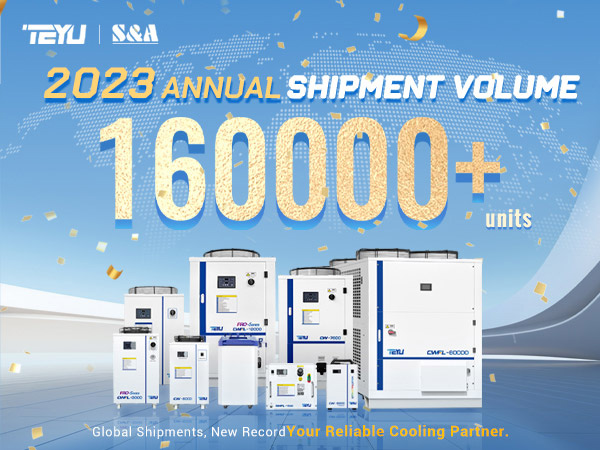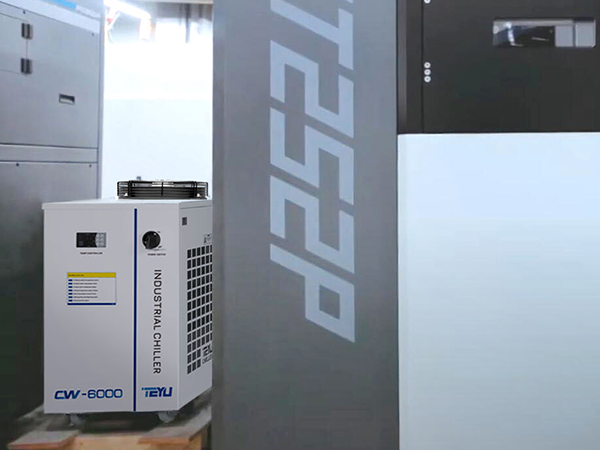Kanthi dhukungan pendinginan saka chiller industri CW-6000, produsen printer 3D industri kasil ngasilake pipa adaptor otomotif generasi anyar sing digawe saka bahan PA6 nggunakake printer berbasis teknologi SLS. Nalika teknologi percetakan SLS 3D berkembang, aplikasi potensial ing bobot otomotif lan produksi khusus bakal berkembang.
Industrial Chiller CW-6000 Powers SLS 3D Printing Diterapake ing Industri Otomotif
Selective Laser Sintering (SLS), wangun manufaktur aditif (AM), nuduhake potensial luar biasa ing industri otomotif amarga kaluwihan unik. TEYU chiller industri CW-6000 , kanthi kapasitas pendinginan sing luar biasa lan kontrol suhu kanthi tliti dhuwur, nduweni peran penting kanggo ndhukung aplikasi teknologi percetakan SLS 3D ing sektor mobil.
Kepiye chiller industri CW-6000 nggunakake kaluwihan kanggo ndhukung printer SLS 3D industri?
Ing pasar, akeh printer SLS 3D nggunakake laser karbon dioksida (CO₂) amarga efisiensi lan stabilitas panyerepan sing apik nalika ngolah bahan bubuk polimer. Nanging, amarga proses nyetak 3D bisa tahan nganti pirang-pirang jam utawa malah luwih suwe, risiko overheating ing laser CO₂ sajrone operasi lengkap bisa kompromi keamanan peralatan cetak 3D lan kualitas cetak. Chiller industri CW-6000 nganggo mekanisme pendinginan aktif sing maju lan nawakake mode kontrol suhu konstan lan cerdas, nyedhiyakake kapasitas pendinginan nganti 3140W (10713Btu / h). Iki cukup kanggo nangani panas sing diasilake dening printer SLS 3D sing dilengkapi karo laser CO2 medium-to-low-daya, mesthekake peralatan beroperasi ing sawetara suhu sing aman lan njaga kinerja sing optimal sajrone nggunakake terus-terusan.
Kajaba iku, chiller industri CW-6000 nawakake presisi kontrol suhu ± 0,5 ° C, sing penting banget kanggo percetakan SLS 3D. Malah fluktuasi suhu sing sithik bisa nyebabake proses sintering laser bubuk, mengaruhi presisi lan kualitas bagian sing dicithak pungkasan.
Kanthi dhukungan pendinginan saka chiller industri CW-6000, produsen printer 3D industri kasil ngasilake pipa adaptor otomotif generasi anyar sing digawe saka bahan PA6 nggunakake printer berbasis teknologi SLS. Ing printer 3D iki, A 55W CO₂ laser, komponèn inti tanggung jawab kanggo sintering materi bubuk menyang struktur bagean, iki èfèktif digawe adhem dening chiller CW-6000 karo sistem sirkulasi banyu stabil, kang njamin output laser konsisten lan nyegah karusakan saka overheating. Pipa adaptor tliti dhuwur sing diprodhuksi bisa nahan beban geter frekuensi dhuwur lan tekanan bledosan, saengga bisa digunakake ing sistem mesin otomotif.
Ing industri otomotif, metode produksi cetak 3D kanthi tliti dhuwur lan efisien iki penting kanggo nyepetake siklus pangembangan produk, nyuda biaya produksi, lan nambah daya saing produk. Kajaba iku, amarga teknologi pencetakan SLS 3D terus berkembang, aplikasi potensial ing bobot entheng otomotif lan produksi khusus bakal luwih maju.
Minangka teknologi manufaktur aditif dadi luwih terpadu menyang industri otomotif, TEYU chillers industri bakal terus kanggo nyedhiyani support kontrol suhu kuwat, nyopir inovasi lan pembangunan ing lapangan.


We are kene kanggo sampeyan nalika sampeyan mbutuhake kita.
Mangga ngrampungake formulir kanggo ngubungi kita, lan kita bakal seneng mbantu sampeyan.










































































































